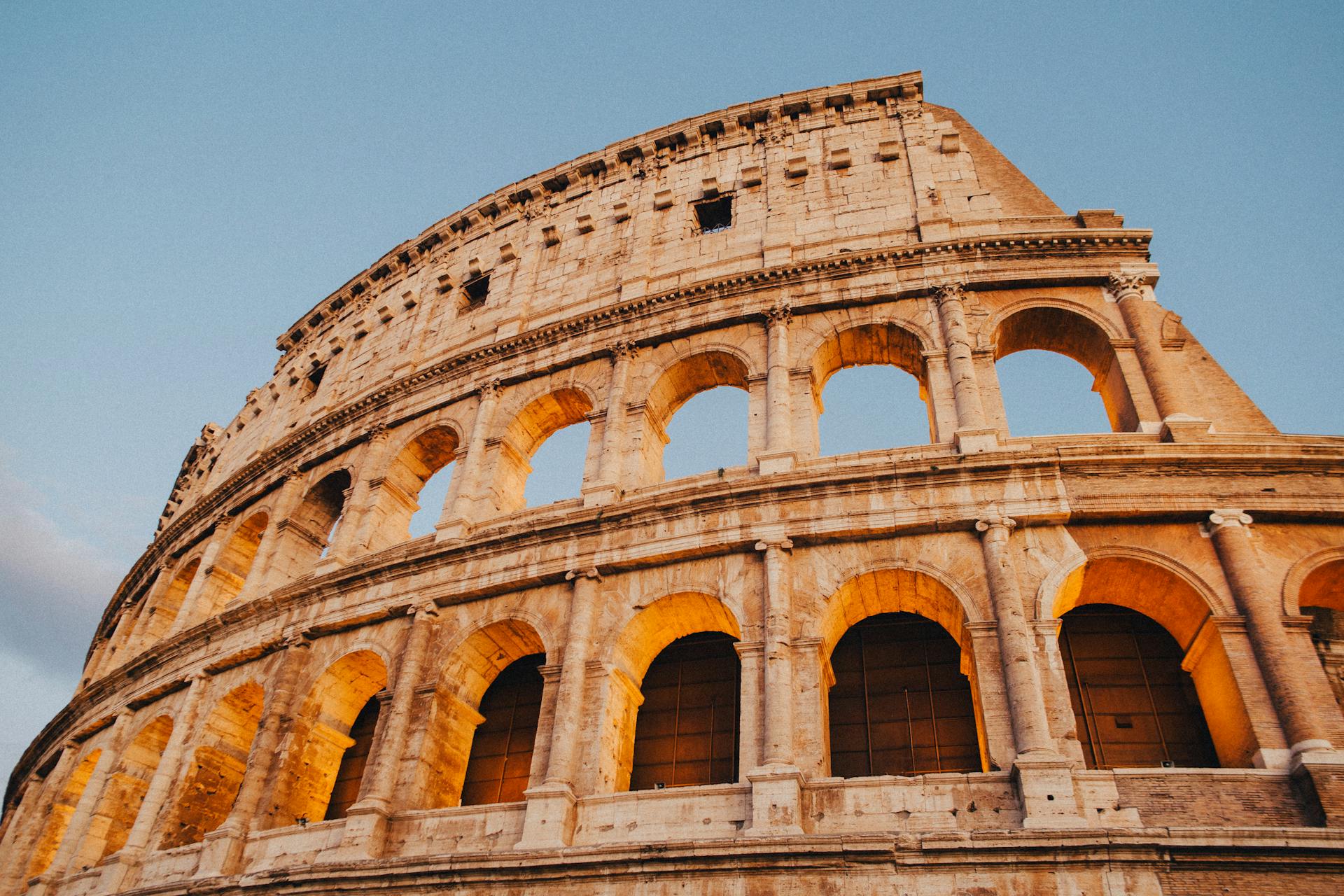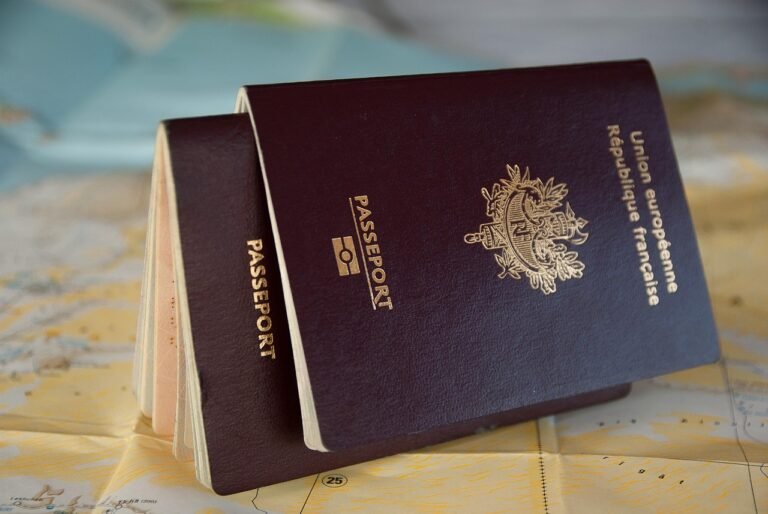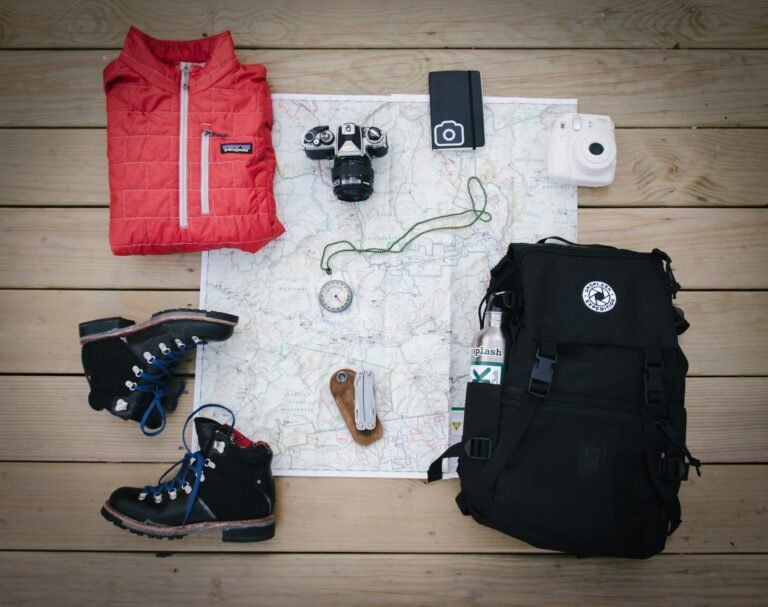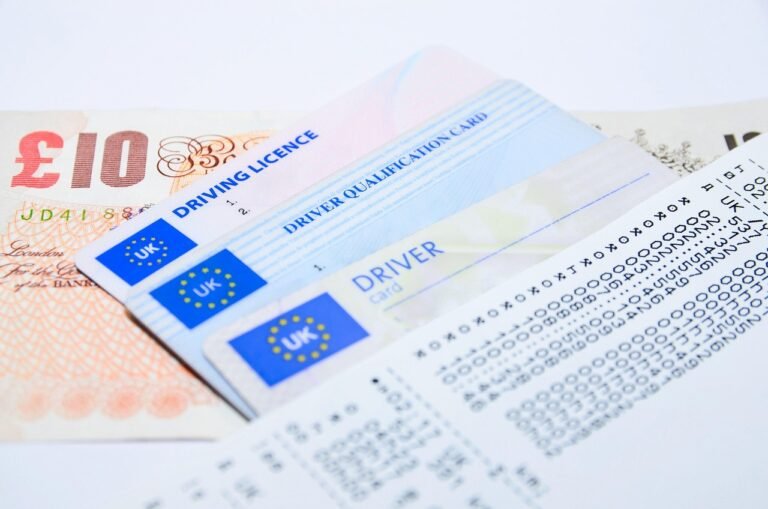Let me paint you a picture: I’m standing in the middle of Piazza Navona, a gelato melting faster than I can eat it, map crumpled in my back pocket, and that familiar traveler’s panic setting in—“Am I doing Rome right?”
My first visit to the Eternal City left me both enchanted and overwhelmed. With nearly three thousand years of civilization layered upon itself like a historical lasagna, Rome doesn’t just offer attractions; it drowns you in them. Every cobblestone seems to whisper stories, every corner reveals another monument that would be the centerpiece of any other city.
So how do you tackle Rome without needing a vacation from your vacation? I’ve made the mistakes, walked the blisters, and now I’m here to guide you through the must-sees, the worth-its, and the honestly-you-can-skips of this magnificent chaos of a city.
What Makes Rome Worth Visiting?
Rome isn’t just a city—it’s a living museum where people still go about their daily lives amidst ruins that have witnessed millennia. Where else can you sip espresso in a café facing a 2,000-year-old temple? Or watch children play football in the shadow of ancient aqueducts?
The beauty of Rome lies in this collision of worlds—the sacred and profane, ancient and modern, touristy and authentic—all coexisting in beautiful contradiction. It’s a city where you’ll plan to see the Colosseum but end up treasuring that random piazza where an old man played accordion while you devoured the best pasta of your life.
Planning Your First Visit to Rome
Before we dive into specific attractions, let’s talk strategy. Rome rewards the prepared but punishes the rigid. The city operates on its own time zone—let’s call it “Roma Time”—where efficiency bows to beauty and lunch can stretch into dinner if the conversation is good enough.
When to Visit Rome
I’ve visited in every season, and honestly, there’s no bad time for Rome—just varying degrees of crowds and sweat. That said:
Spring (April-May) brings comfortable temperatures and blooming gardens, though Easter week sees enormous crowds if it falls during this period.
Fall (September-October) offers similar benefits with fewer crowds than spring and still-pleasant weather. This is my personal sweet spot.
Summer (June-August) is hot. Like, mascara-melting, shirt-soaking hot. Tourist attractions become human sardine tins, and many locals flee the city. On the plus side, summer evenings are magical, with outdoor concerts and dining under the stars.
Winter (November-February) sees fewer tourists, lower prices, and moody, atmospheric streets. Just pack layers and an umbrella. Christmas in Rome is particularly special, with nativity scenes and lights adding warmth to the cooler season.
The Unmissable Roman Attractions
1. The Colosseum and Roman Forum
“Did gladiators actually fight to the death here?” my nephew whispered as we gazed down into the Colosseum’s vast arena. The answer is yes—though not quite as dramatically as Russell Crowe would have us believe.
This iconic amphitheater hosted spectacles ranging from mock sea battles to exotic animal hunts and gladiatorial combat. Today, even surrounded by selfie sticks and tour groups, the Colosseum retains its power to awe.
Pro Tip: Buy the combined ticket for the Colosseum, Roman Forum, and Palatine Hill online before your trip. Not only will you save time in line, but you’ll have three days to use it, allowing you to spread these visits out rather than cramming them into one exhausting day.

Just a short walk from the Colosseum, the Roman Forum and Palatine Hill offer an even deeper dive into ancient Roman life. Where the Colosseum gave Romans their entertainment, the Forum was the beating heart of daily life—politics, commerce, religion, and gossip all happened here.
I recommend hiring a guide for this area—or at least bringing a good guidebook. Without context, these ruins risk becoming a puzzling collection of old columns and partial walls. With context, they transform into the vibrant center of the ancient world’s most powerful empire.
2. Vatican City
Even for non-Catholics, Vatican City is a jaw-dropping experience. Home to St. Peter’s Basilica, the Sistine Chapel, and the Vatican Museums, this tiny city-state contains more artistic masterpieces per square foot than anywhere else on earth.
My first visit to the Sistine Chapel taught me an important lesson in expectation management. After shuffling through packed museum corridors for what seemed like miles, I finally entered Michelangelo’s masterpiece—only to be initially underwhelmed by its size (it’s smaller than most people expect). But then I looked UP, and time simply stopped. The ceiling is overwhelming in its detail and storytelling. Give yourself time to actually see it—find a wall to lean against and just observe.
Vatican Museums Strategy: The museums follow a one-way route eventually leading to the Sistine Chapel. Many people rush through the earlier sections to reach Michelangelo’s masterpiece, missing incredible works along the way. Don’t be that person! The Map Room alone is worth savoring.
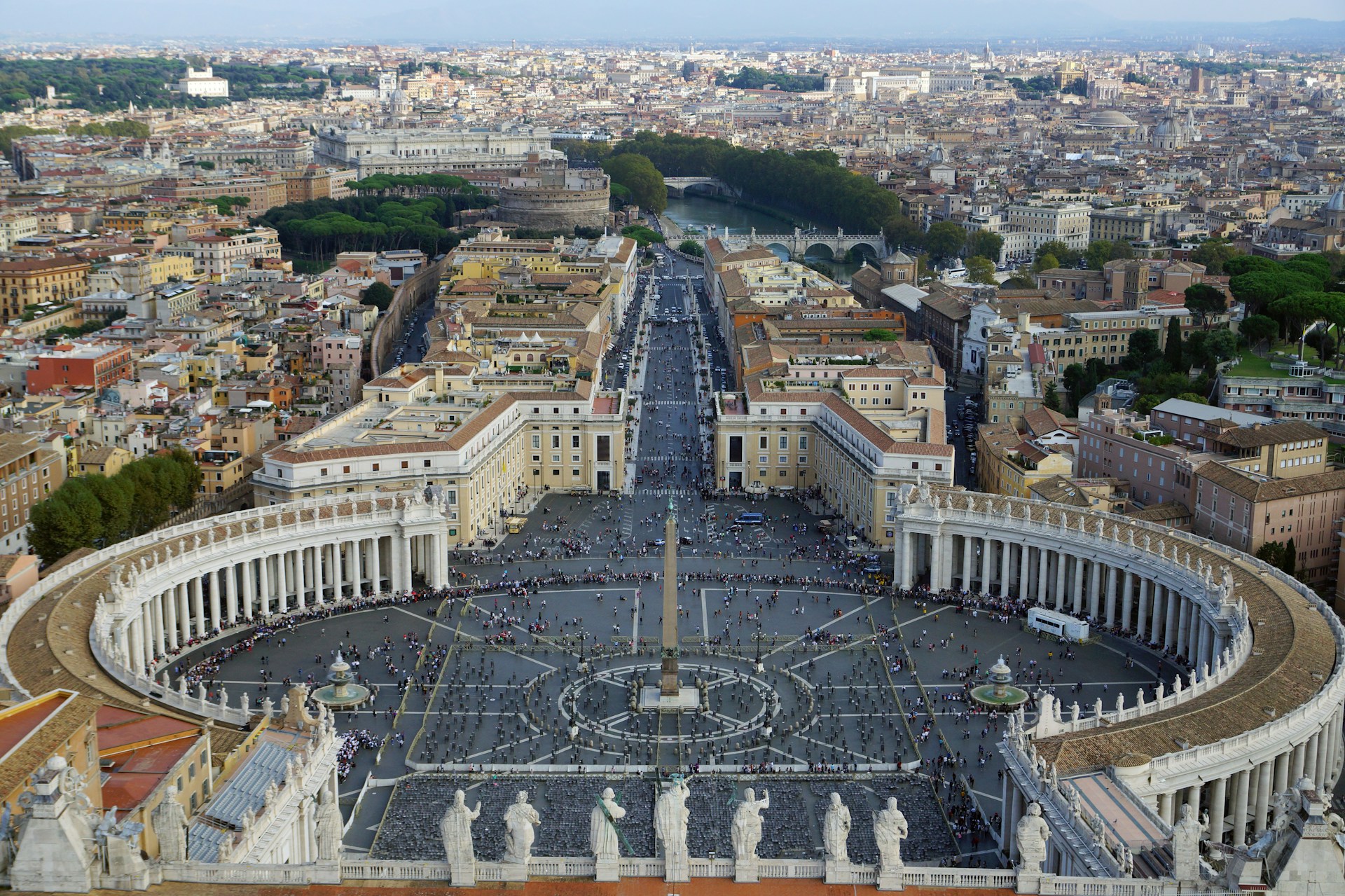
Skip-the-Line Warning: Those hawkers offering to help you “skip the line” outside the Vatican? They’re selling guided tours at significant markups. Book official tickets through the Vatican website instead.
3. The Pantheon
The Pantheon is Rome’s architectural miracle—a 2,000-year-old temple with the world’s largest unreinforced concrete dome. Standing beneath that perfect oculus, watching sunlight or rain fall through the central opening directly onto the marble floor below, is a transcendent experience.
Built during Emperor Hadrian’s reign (around 126 AD), it’s one of the best-preserved ancient Roman buildings, largely because it was converted to a church in 609 AD. The Pantheon demonstrates Roman engineering at its most brilliant—the dome’s thickness gradually decreases as it rises, and the oculus serves as both skylight and structural element.
Visit Timing: Early morning or late afternoon offers the best light effects through the oculus. The Pantheon gets crowded midday, so aim for opening time if possible.
What I love most about the Pantheon is that it sits in an otherwise ordinary square. You’ll find locals sipping coffee in cafés, street performers entertaining crowds, and daily life buzzing around this ancient wonder—the perfect embodiment of Rome’s layered existence.
4. Trevi Fountain
Yes, it’s touristy. Yes, it’s always crowded. And yes, you absolutely must see it anyway. The Trevi Fountain is one of those rare attractions that still manages to impress despite its Instagram fame.
Completed in 1762, this baroque masterpiece depicts Neptune’s chariot led by Tritons with seahorses. The tradition says that tossing one coin ensures your return to Rome, two coins promises romance with an Italian, and three coins guarantees marriage.
I’ve tossed many coins over multiple visits, and while I’m still waiting on that Italian romance, I do keep returning to Rome—so there’s some truth to the legend.
Timing Tip: Visit after dinner (around 10 PM) or very early morning for smaller crowds. The fountain is beautifully lit at night, creating a magical atmosphere that’s worth braving the evening crowds.
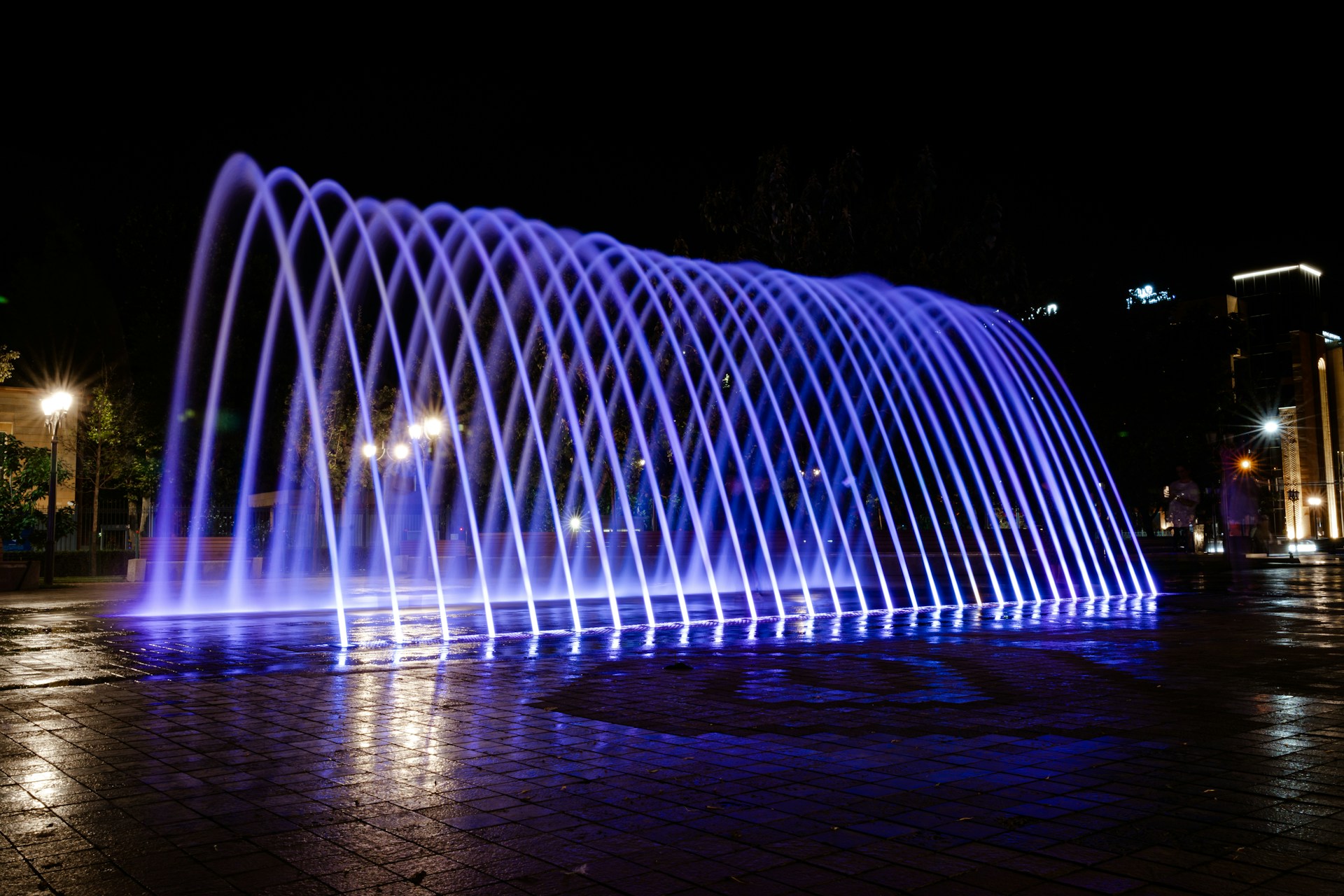
5. Piazza Navona
This elongated square follows the shape of the ancient Stadium of Domitian, where Romans once watched athletic competitions. Today, it’s home to three stunning fountains (including Bernini’s Fountain of the Four Rivers), outdoor cafés, portrait artists, and street performers.
Piazza Navona exemplifies the Roman art of la passeggiata—the evening stroll where people see and be seen. It’s less about getting somewhere and more about the beautiful act of simply being present.
While the restaurants directly on the piazza charge tourist prices for mediocre food, sitting at one for a coffee or aperitivo is worthwhile for the people-watching alone. Just maybe eat dinner elsewhere.
Beyond the Big Five: Rome’s Second-Tier Wonders
Once you’ve checked off the headliners, these slightly less famous but equally magnificent sites await:
Spanish Steps and Villa Borghese Gardens
The Spanish Steps create Rome’s most elegant staircase, linking Piazza di Spagna with the French church of Trinità dei Monti. In spring, they’re decorated with pink azaleas, creating a perfect photo opportunity.
From the top of the steps, walk north into the Villa Borghese gardens, Rome’s central park. Rent a rowboat on the small lake, visit the outstanding Borghese Gallery (reservation required), or simply find a shady spot to rest your feet while watching Roman families enjoy their weekend.
Trastevere Neighborhood
Across the Tiber River lies Trastevere, a neighborhood that still feels like old Rome despite its growing popularity. Laundry hangs from windows, ivy climbs weathered buildings, and narrow cobblestone streets lead to hidden courtyards and small churches housing unexpected artistic treasures.
By day, explore the magnificent church of Santa Maria in Trastevere with its glittering medieval mosaics. By night, join locals and visitors alike in the area’s trattorias and bars. The lively Piazza di Santa Maria becomes the neighborhood’s living room once the sun sets.
Roman Food: Beyond Pizza and Pasta
Let’s be honest—a significant percentage of Rome’s appeal involves what you’ll eat there. Roman cuisine is deceptively simple, relying on quality ingredients rather than complex techniques.
Must-try Roman specialties include:
- Cacio e Pepe: The simplest yet most difficult-to-perfect pasta—just cheese, pepper, and the starchy water from cooking pasta.
- Carbonara: Egg, pecorino cheese, guanciale (cured pork jowl), and black pepper create this creamy, no-actual-cream-allowed classic.
- Supplì: Fried rice balls with a gooey mozzarella center—the perfect street food.
- Roman-style artichokes: Prepared either alla giudia (Jewish-style, deep-fried) or alla romana (braised with herbs), when in season.
- Maritozzo: A sweet bun sliced and filled with whipped cream—the traditional Roman breakfast.
Drinking Tip: Those green water fountains throughout the city? They’re called nasoni (“big noses”) and dispense free, clean, delicious water. Bring a refillable bottle and use them—your wallet and the environment will thank you.
My Roman Disaster Story
No travel blog is complete without a cautionary tale, right? On my second Rome trip, I decided to be “spontaneous” and showed up without hotel reservations during what turned out to be a major religious holiday. After six hours of increasingly desperate searching, I ended up in a “hotel” so sketchy that the shower and toilet occupied the same square meter of space, and the bed sagged like a hammock.
The lesson? Rome rewards advance planning, especially for accommodations and major site tickets. Spontaneity is best saved for which piazza to have your afternoon espresso in, not where you’ll sleep.
Practical Tips for Rome First-Timers
- Walking is usually faster than public transport for central Rome attractions, but wear proper shoes—those charming cobblestones become foot torture devices around hour four.
- Learn a few Italian phrases. Even basic greetings and thank-yous earn goodwill. Start with “buongiorno” (good day), “grazie” (thank you), and “il conto, per favore” (the bill, please).
- Validate your public transport tickets in the yellow machines before boarding buses or entering metro stations. Fines for unvalidated tickets are hefty.
- Dress appropriately for churches. Shoulders and knees must be covered in major churches, including all Vatican sites. I keep a light scarf in my bag for impromptu church visits.
- Beware of tourist-menu restaurants, especially near major attractions. Generally, if the menu has photos or is translated into five languages, keep walking.
- Tipping is not expected the way it is in America. Service (servizio) is often included; if not, rounding up or leaving a few euros is sufficient.
Top Recommendations for Your Rome Visit
Where to Stay
- Hotel Artemide – https://www.hotelartemide.it/ – Centrally located near Repubblica metro with soundproof rooms and an exceptional breakfast buffet.
- The Beehive – https://www.the-beehive.com/ – Eco-friendly hostel/hotel hybrid near Termini station with a lovely garden courtyard.
- Residenza Canali ai Coronari – https://www.residenzacanali.com/ – Boutique guesthouse in a 16th-century building near Piazza Navona.
- Generator Rome – https://staygenerator.com/hostels/rome – Stylish budget option with private rooms and dormitories in a convenient location.
Tours Worth Taking
- Walks of Italy: VIP Colosseum Underground Tour – https://www.walksofitaly.com/ – Access restricted areas including the underground chambers where gladiators and animals waited.
- Eating Italy Food Tours – https://www.eatingitalyfoodtours.com/ – Explore Testaccio or Trastevere neighborhoods through their culinary traditions.
- Context Travel’s Vatican Tour – https://www.contexttravel.com/ – Small-group deep dives led by doctoral-level art historians.
- Roma Experience’s Vespa Tour – https://www.romaexperience.com/ – Channel your inner Audrey Hepburn with a guided Vespa tour of the city.
Rome Apps and Resources
- Google Maps offline download – Save Rome’s map for offline use to avoid data charges.
- Rick Steves Audio Europe App – https://www.ricksteves.com/watch-read-listen/audio/audio-europe – Free audio guides for major attractions.
- Probus Rome – https://play.google.com/store/apps/details?id=com.probustech.rome – Public transportation routes and real-time updates.
- Duolingo – https://www.duolingo.com/ – Practice basic Italian phrases before and during your trip.
Roman Souvenirs That Aren’t Tacky
- Handmade leather goods from Masto Fiore – https://www.mastofiore.com/
- Artisanal pasta from Antico Pastificio Rosetum
- Locally produced olive oil from Volpetti – https://www.volpetti.com/
- Handcrafted notebooks from Fabriano Boutique – https://fabrianoboutique.com/
Day Trip Options from Rome
If you’re staying more than four days, consider these worthwhile excursions:
- Ostia Antica – Rome’s ancient port city offers ruins as impressive as Pompeii but with fewer crowds and just a 30-minute train ride from central Rome.
- Tivoli – Home to Villa d’Este (with its magnificent Renaissance gardens and fountains) and Hadrian’s Villa (the emperor’s countryside retreat).
- Orvieto – This Umbrian hill town sits dramatically atop a volcanic plug and features one of Italy’s most stunning Gothic cathedrals.
Wrapping Up: Is Rome Worth the Hype?
After multiple visits, I can confidently say yes—Rome is worth every bit of its reputation and then some. The Eternal City doesn’t just show you history; it immerses you in it, wraps you in layers of civilization, art, and human experience that simply can’t be replicated elsewhere.
Like all great love affairs, Rome will occasionally frustrate you. You’ll get lost. You’ll pay too much for a mediocre meal. You’ll sweat through your clothes waiting in an interminable line.
And yet, you’ll find yourself planning your return before you’ve even left, already nostalgic for that perfect moment when you turned a corner to find a baroque fountain bathed in golden hour light, or the taste of that transcendent carbonara in a restaurant whose name you can’t quite remember.
Rome doesn’t just capture your imagination—it claims a piece of your heart.
Frequently Asked Questions About Visiting Rome
How many days do I need to see Rome?
At minimum, dedicate three full days to Rome’s major attractions. Ideally, plan for 4-5 days to enjoy the city without rushing and include time for spontaneous discoveries. Remember: Rome reveals itself best to those who occasionally put down the guidebook.
Is Rome safe for tourists?
Rome is generally safe, though petty theft occurs in crowded tourist areas. Stay vigilant near the Termini station, on crowded buses (especially #64), and around major attractions. The biggest dangers are typically pickpockets and scammers rather than violent crime.
What’s the best way to get around Rome?
For central Rome, walking is often best. The historic center is compact, and many attractions lie within a 30-minute walk of each other. For longer distances, the metro is fast but limited (just three lines). Buses are comprehensive but can be confusing and crowded. Avoid driving in Rome—traffic is chaotic and parking nearly impossible.
When is the best time to visit Rome?
Mid-April to June and September to October offer pleasant weather and somewhat fewer crowds. July and August are hot and crowded, while November through March (except Christmas/New Year) sees fewer tourists but cooler, sometimes rainy weather.
Do I need to speak Italian to visit Rome?
English is widely spoken in tourist areas, hotels, and restaurants. Learning basic Italian phrases is appreciated and will enhance your experience, but it’s not strictly necessary for getting around.
Is the Roma Pass worth buying?
The Roma Pass (€32 for 48 hours or €52 for 72 hours) includes public transport and free/reduced admission to museums. Whether it’s worth it depends on your itinerary—calculate the individual costs of what you plan to see to determine if the pass saves money.
What should I wear in Rome?
Comfortable walking shoes are essential. Dress in layers that can be added or removed as temperatures change. For visiting churches, including the Vatican, shoulders and knees must be covered. In summer, breathable fabrics help cope with the heat.
How much should I budget per day in Rome?
Excluding accommodation, budget travelers can manage on €50-70 daily, mid-range travelers on €100-150, and luxury travelers on €200+. Food costs vary widely—a coffee at a bar is €1-2 standing up, but €4-6 sitting at a table in a touristy piazza.
Are credit cards widely accepted in Rome?
Most hotels, restaurants, and shops accept credit cards, but always carry some cash for small purchases, buses, taxis, and small establishments. Some businesses have minimum purchase requirements for cards.
What’s the tipping etiquette in Rome?
Tipping is not obligatory as service is usually included. Round up the bill or leave a few euros for good service in restaurants. For taxis, round up to the nearest euro. Tour guides typically expect a tip of €5-10 per person for a good tour.

